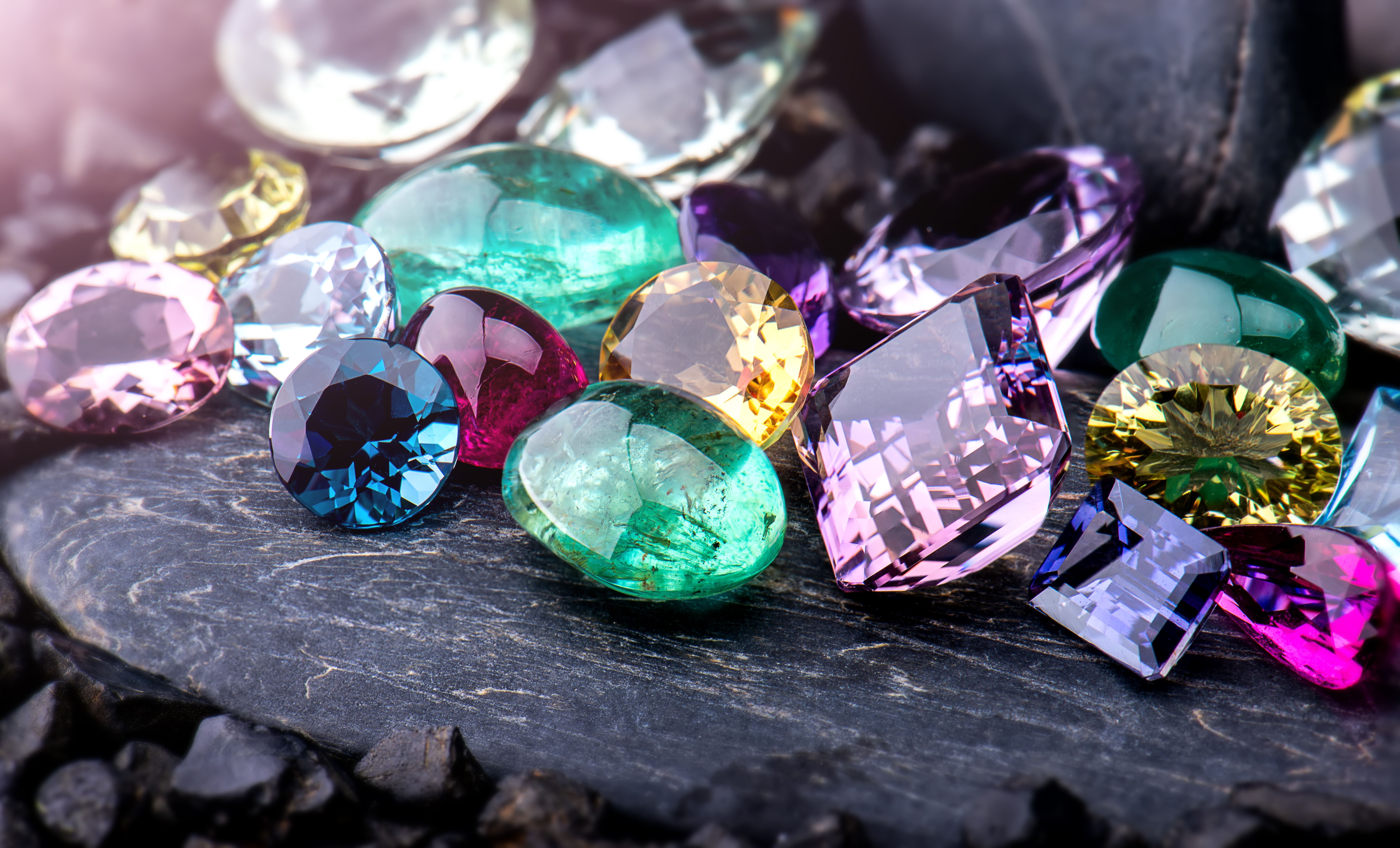Characterizing Gemstones Using Raman Spectroscopy and Multivariate Analysis
A recent study examined how to differentiate between genuine and false gemstones using Raman spectroscopy and multivariate analysis.
A recent study conducted at the Universidade de São Paulo explored how portable Raman spectroscopy can help classify gemstones and determine counterfeits. The findings of the study were published in Forensic Science International (1). This study, led by Aline Thais Bruni, associate professor of chemistry at the Universidade de São Paulo, demonstrates how Raman spectroscopy and multivariate analysis can improve gemstone classification.
Gemstones are especially valuable for the jewelry industry and Brazil is one of the biggest exporters of gemstones in the world. Some of the most popular gemstones found in the country include aquamarine, amethyst, emerald, quartz, sapphire, and topaz (2). However, a challenge that jewelry makers face is determining whether these gemstones are counterfeit. The quality of the gemstone determines how much jewelry makers can charge. Gemstone classification is a crucial aspect of forensic gemology, requiring precise identification of mineral species, purity, origin, and any treatments applied to the stone (1). However, to analyze gemstones, it requires a non-destructive technique to preserve the gemstone (1).
Gemstones collection jewelry set. | Image Credit: © NPD stock - stock.adobe.com

Raman spectroscopy, which is a nondestructive technique, presents a potential solution to this problem. The technique also offers other advantages, including requiring no sample preparation and allowing for rapid analysis (1). In the study, Bruni and the research team examined 14 types of Brazilian gemstones: agate; amazonite; amethyst; yellow calcite; orange calcite; citrine; hematite; yellow jasper; tiger’s eye; onyx; blue quartz; rose quartz; green quartz; and sodalite. Using a portable Raman spectroscopy system, the researchers analyzed three fragments of each gemstone type, with three spectra taken from different faces of each piece, resulting in a total of 252 spectra (1).
After analyzing the spectra, the team used univariate analysis and multivariate analysis to differentiate between the gemstone classes. The researchers found that multivariate analysis was more effective at doing so after removing outliers and optimizing variable selection (1).
Although univariate methods can detect trends within chemically similar gemstones, the SIMCA analysis achieved improved accuracy with sensitivity, specificity, precision, and F1-score metrics exceeding 85% (1). These results underscore the potential of Raman spectroscopy, in combination with multivariate statistical techniques, for reliable gemstone classification.
The researchers also compared rough and polished gemstones. Samples of the same mineral type exhibited stronger correlations when untreated, but physical treatments introduced variations that affected classification accuracy (1). This finding highlights the importance of developing robust classification models capable of accounting for surface modifications (1).
Lastly, the researchers address the current issue of existing gemstone databases not taking regional differences into consideration. They suggest that creating localized spectral databases tailored to specific geographic locations can improve the accuracy of gemstone identification and reduce discrepancies caused by equipment or methodological differences (1).
Raman spectroscopy is helping forensic analysts in the jewelry industry. As more data is collected and classification models are refined, the ability to distinguish between natural gemstones, synthetic counterparts, and treated stones will undoubtedly improve (1). This study also demonstrates the feasibility of in-field gemstone analysis, an essential development for forensic investigations, customs enforcement, and the jewelry industry.
With continued research, portable Raman systems, combined with advanced statistical modeling, can significantly improve the precision and efficiency of forensic gemology (1). In turn, ongoing advancements in technology and statistical modeling would help the jewelry industry identify and determine which gemstones are genuine. The jewelry industry relies on authentic gemstones to create different types of jewelry, and thanks to spectroscopy, the ability to classify real gemstones from fake ones is gradually becoming easier.
References
- Rodrigues, C. H. P.; Castro de Sousa, G.; de Oliveira, M. F.; Bruni, A. T. Forensic Characterization of Brazilian Gemstones: A Pilot Study Employing Raman Spectroscopy and Multivariate Analysis. For. Sci. Int. 2025, 367, 112374. DOI: 10.1016/j.forsciint.2025.112374
- Mordor Intelligence, Brazil Jewelry Market Trends Source. Mordor Intelligence. Available at: https://www.mordorintelligence.com/industry-reports/brazil-jewelry-market-industry/market-trends (accessed 2025-02-18).
AI-Powered SERS Spectroscopy Breakthrough Boosts Safety of Medicinal Food Products
April 16th 2025A new deep learning-enhanced spectroscopic platform—SERSome—developed by researchers in China and Finland, identifies medicinal and edible homologs (MEHs) with 98% accuracy. This innovation could revolutionize safety and quality control in the growing MEH market.
New Raman Spectroscopy Method Enhances Real-Time Monitoring Across Fermentation Processes
April 15th 2025Researchers at Delft University of Technology have developed a novel method using single compound spectra to enhance the transferability and accuracy of Raman spectroscopy models for real-time fermentation monitoring.
Nanometer-Scale Studies Using Tip Enhanced Raman Spectroscopy
February 8th 2013Volker Deckert, the winner of the 2013 Charles Mann Award, is advancing the use of tip enhanced Raman spectroscopy (TERS) to push the lateral resolution of vibrational spectroscopy well below the Abbe limit, to achieve single-molecule sensitivity. Because the tip can be moved with sub-nanometer precision, structural information with unmatched spatial resolution can be achieved without the need of specific labels.